Here at GreenBlue Urban we are committed to bringing our collaborators, and indeed a wide range of interested stakeholders, a broad range of evidence-based case studies that cover situations where the ideal tree pit scenario cannot be attained.
Here at GreenBlue Urban we are committed to bringing our collaborators, and indeed a wide range of interested stakeholders, a broad range of evidence-based case studies that cover situations where the ideal tree pit scenario cannot be attained.
Nowhere is the fight for space and soil volume felt more acutely than in the heart of the capital. This is precisely why we sent our very own Howard Gray to work in conjunction with John Parker – TfL & Chair of LTOA and his team to integrate our StrataCell system into a complex tree pit scenario along Blackfriars Road, London.
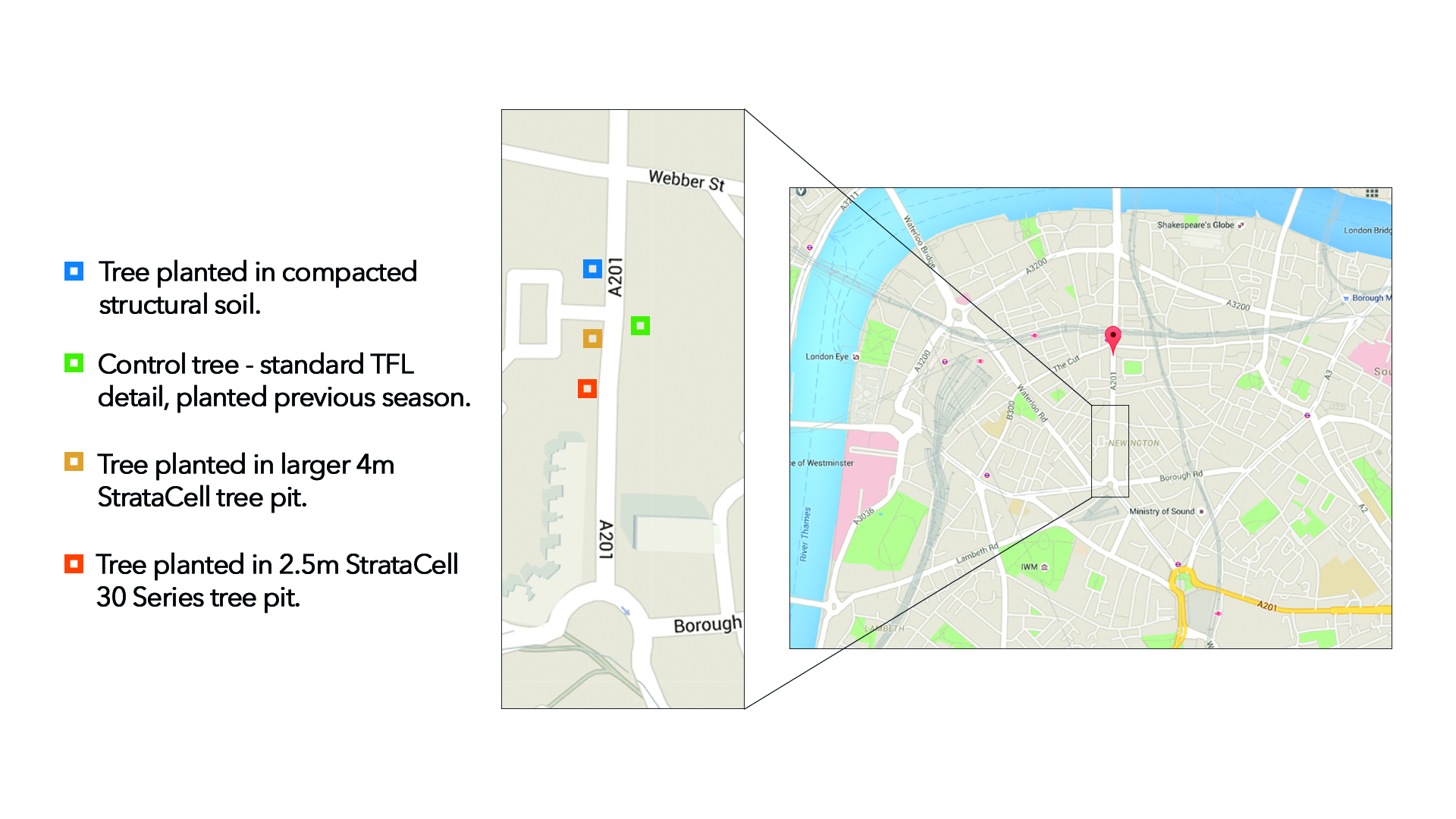
In collaboration with TfL and Barcham Trees the following test was implemented in 2014:
Four identical species and size of tree (Platanus hispanicus 18-20cm girth) were planted in Blackfriars Road, as follows:
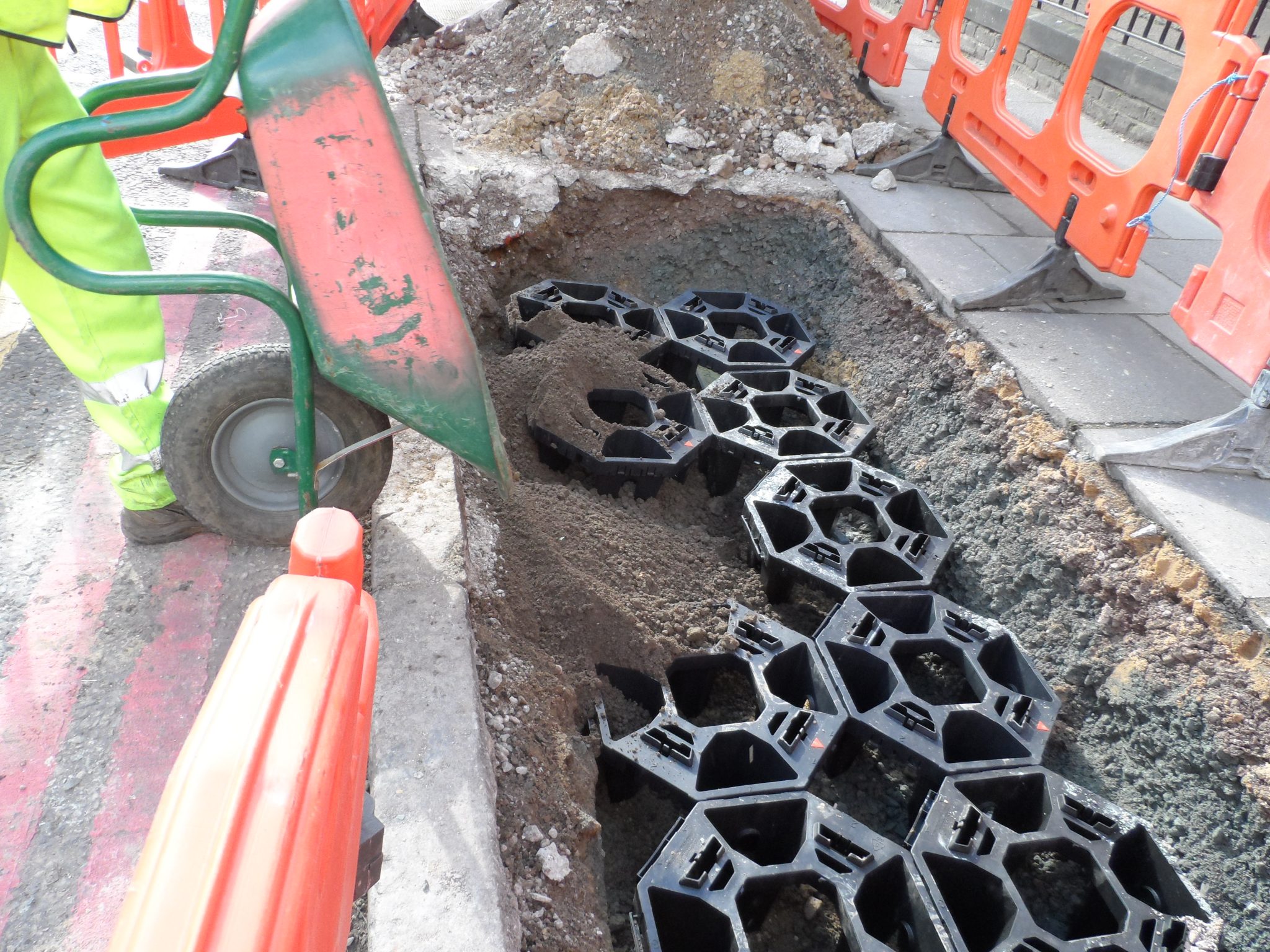
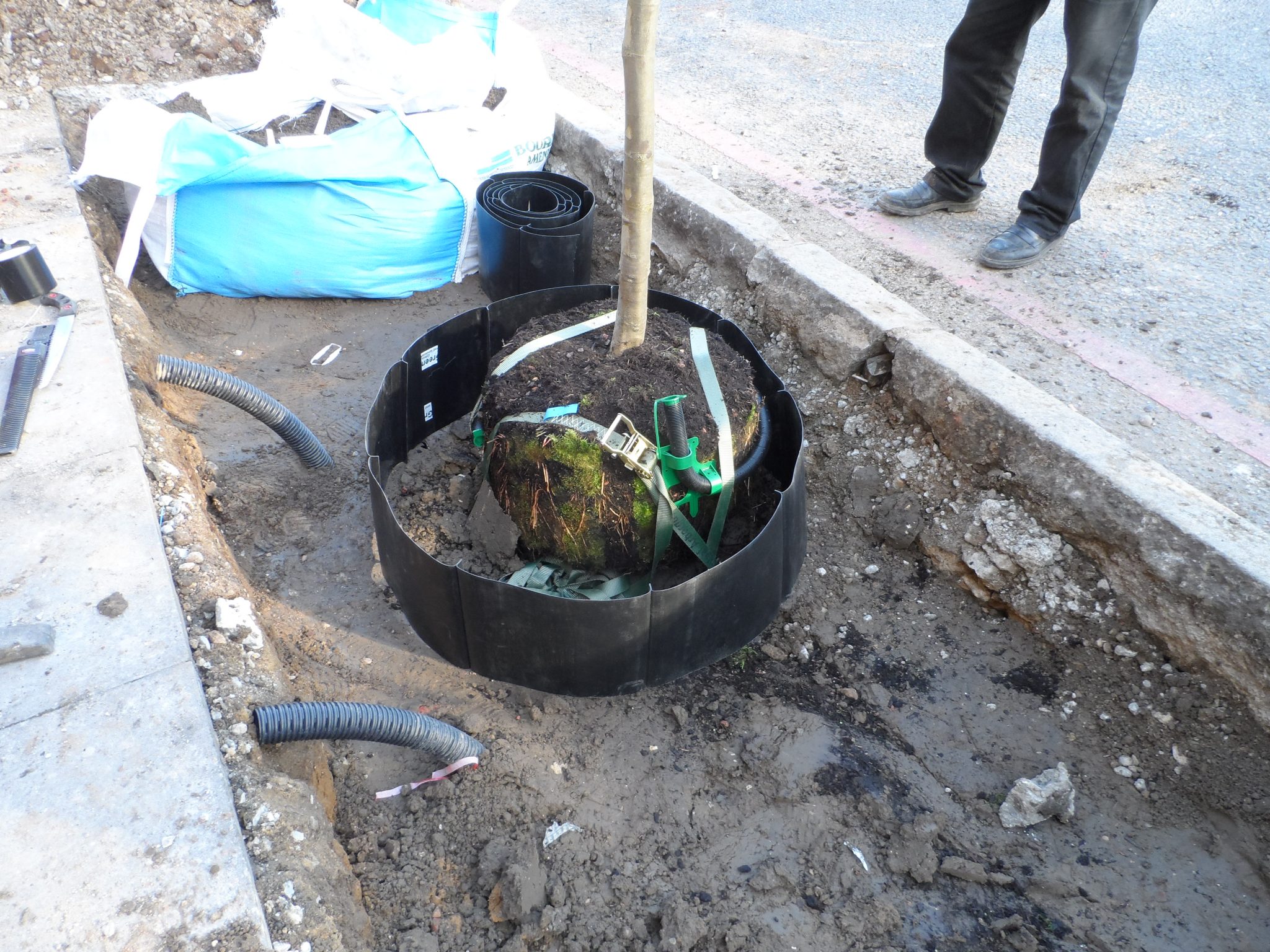
Project
Location
Contractor
Landscape Architect
Here at GreenBlue Urban we are committed to bringing our collaborators, and indeed a wide range of interested stakeholders, a broad range of evidence-based case studies that cover situations where the ideal tree pit scenario cannot be attained.
Here at GreenBlue Urban we are committed to bringing our collaborators, and indeed a wide range of interested stakeholders, a broad range of evidence-based case studies that cover situations where the ideal tree pit scenario cannot be attained.
Nowhere is the fight for space and soil volume felt more acutely than in the heart of the capital. This is precisely why we sent our very own Howard Gray to work in conjunction with John Parker – TfL & Chair of LTOA and his team to integrate our StrataCell system into a complex tree pit scenario along Blackfriars Road, London.

In collaboration with TfL and Barcham Trees the following test was implemented in 2014:
Four identical species and size of tree (Platanus hispanicus 18-20cm girth) were planted in Blackfriars Road, as follows:


Project
Location
Contractor
Landscape Architect
Project
Location
Contractor
Landscape Architect
Tree Pit 2, Showing ReRoot, Aeration and Guying.
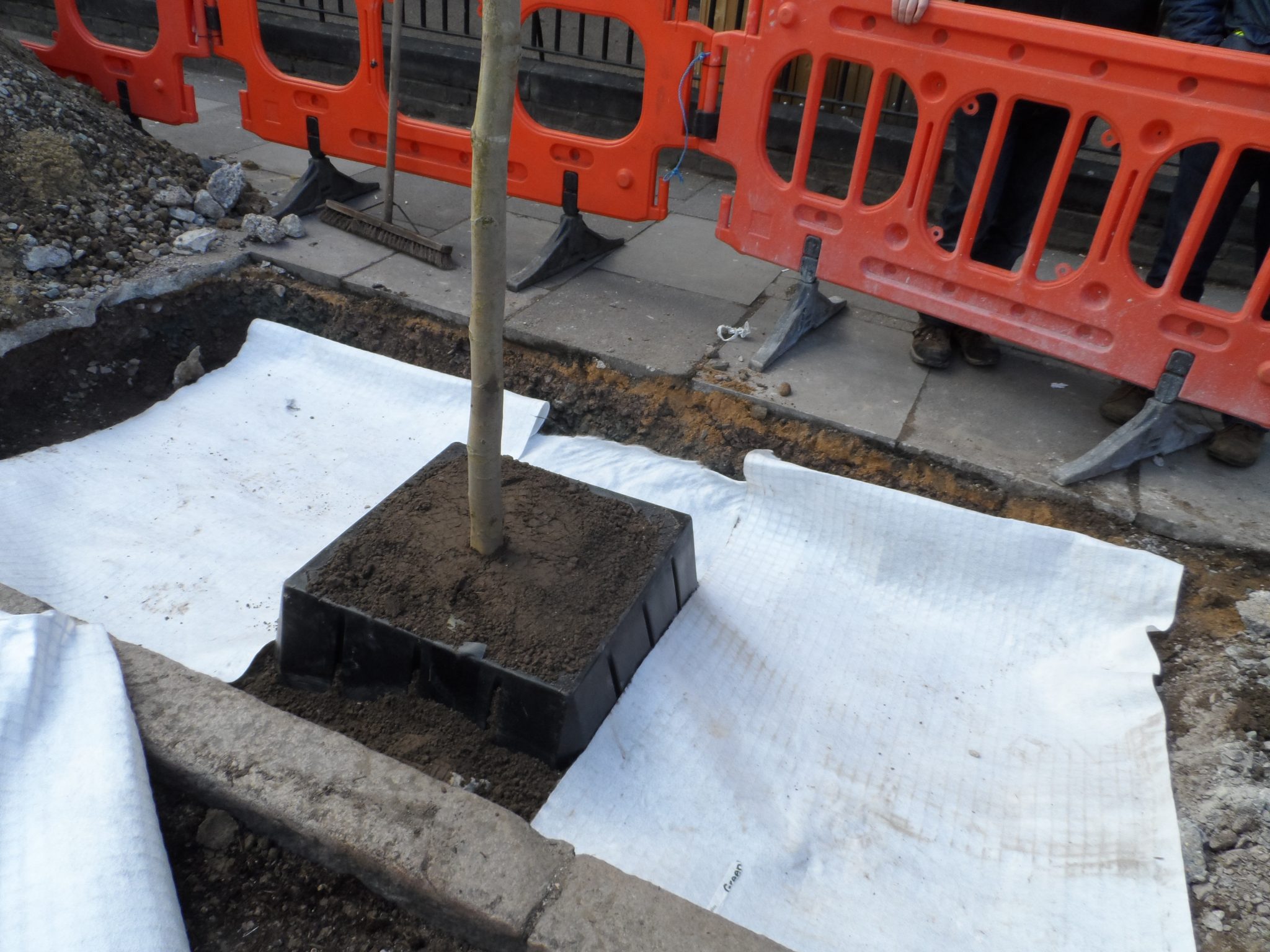 Tree Pit 1 with RootDirector
Tree Pit 1 with RootDirector
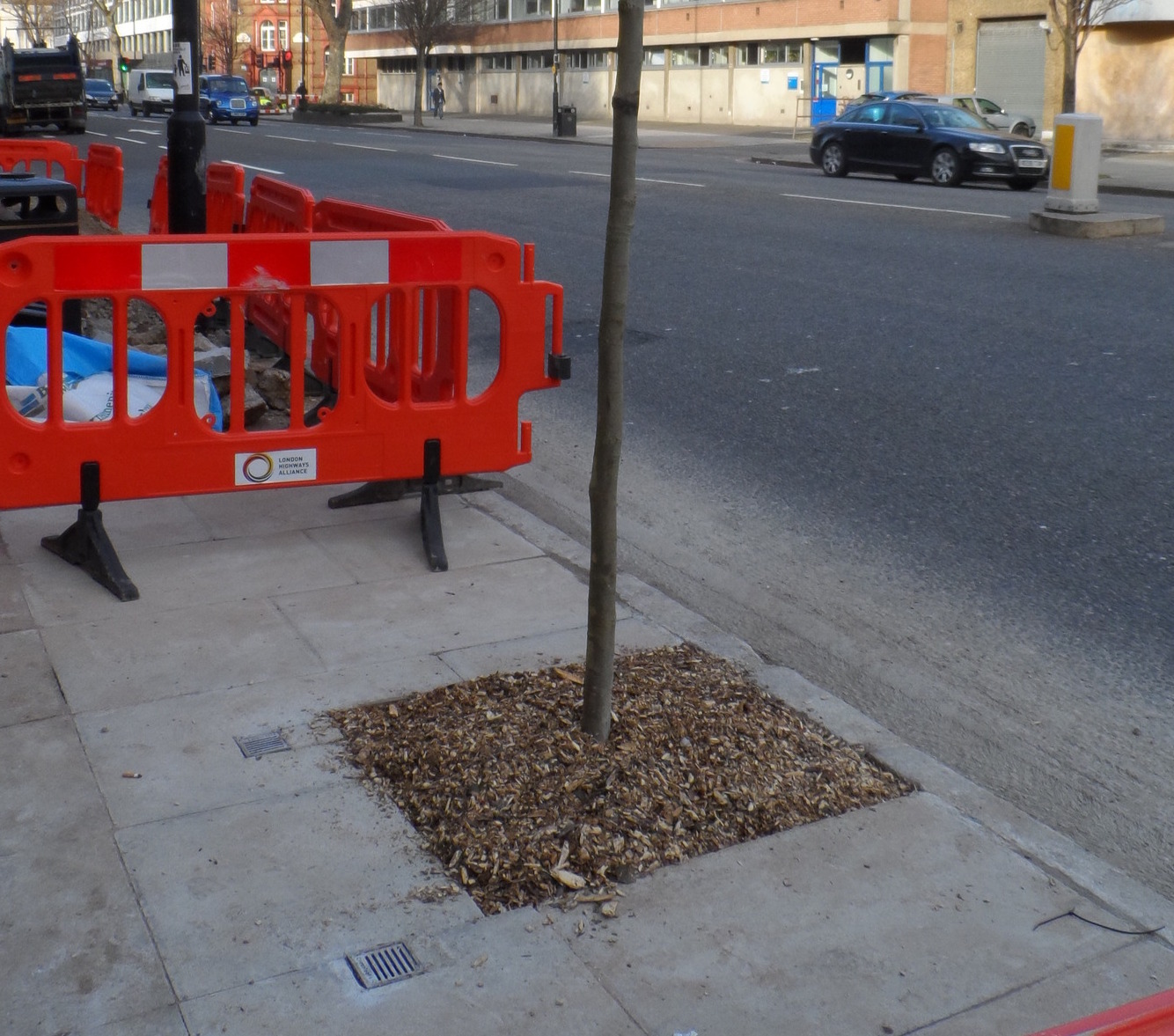 Tree pit 2 – showing ArborVent inlets – subsequently removed in repaving works.
Tree pit 2 – showing ArborVent inlets – subsequently removed in repaving works.
Significant civil engineering activities have taken place around these trees since planting, namely construction of the new super highway cycle route and repaving around all trees which may well have had negative impacts on the tree through careless construction methods and accidental damage.
Also noted that during repaving works, the Arborvent inlets supplying air to tree number 2, have been removed and not replaced.
Tree no. 1 has a distinct lean, consistent with being knocked into by construction traffic.
Tree Pit 2, Showing ReRoot, Aeration and Guying.
 Tree Pit 1 with RootDirector
Tree Pit 1 with RootDirector
 Tree pit 2 – showing ArborVent inlets – subsequently removed in repaving works.
Tree pit 2 – showing ArborVent inlets – subsequently removed in repaving works.
Significant civil engineering activities have taken place around these trees since planting, namely construction of the new super highway cycle route and repaving around all trees which may well have had negative impacts on the tree through careless construction methods and accidental damage.
Also noted that during repaving works, the Arborvent inlets supplying air to tree number 2, have been removed and not replaced.
Tree no. 1 has a distinct lean, consistent with being knocked into by construction traffic.
We can observe the necessity of building the cell system around existing services. It is not always possible to divert essential services and utilities and therefore this is a solution that enables a cross section of stakeholders to work together to realise an end result which includes urban trees.
 Services at Blackfriars.
Services at Blackfriars.
Space is obviously at a premium and it is therefore critical that the cells can be installed alongside root management products to ensure that tree pits can be placed as close to the highway as possible to provide enough space to enable the optimum effectiveness of approach.
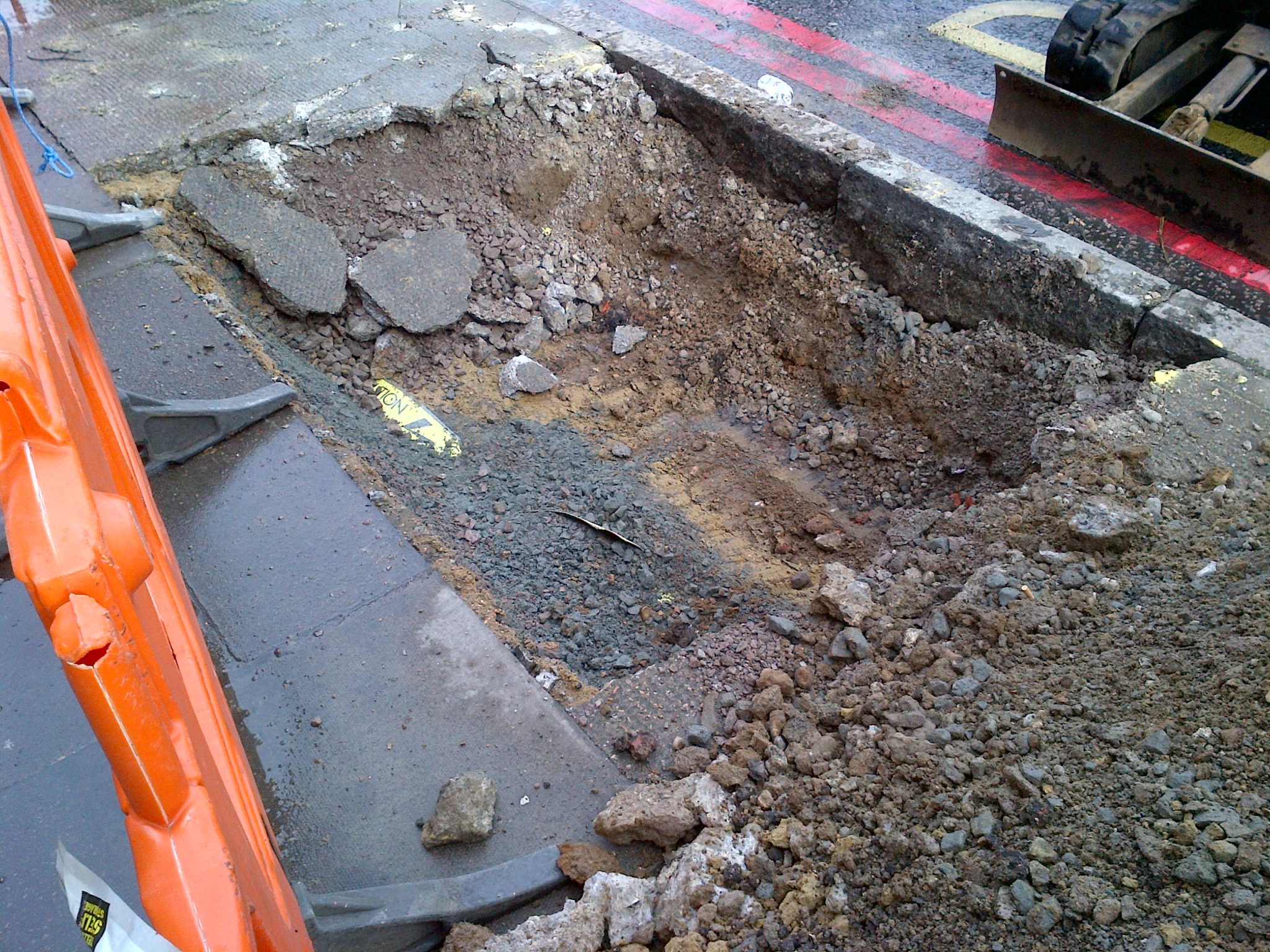
As we can see from the above image, we often face a plethora of challenges at the very outset of the excavation phase, including heavily compacted and poor-quality soil as well as services close to the paved surface.
It is safe to say that GBU are proud of the first 2 tree pits in soil cells, the trees are clearly flourishing the 3rd in structural soil has unfortunately now gone as has the staked tree planted the previous year. The road has also re-structured with movement of the bus stop and introduction of cycle path therefore encouragement of modal shift with increased canopy cover.
Discover more on the Trial Tree Pit with our latest Podcast from John Parker of TfL & London Tree Officers Association.
We can observe the necessity of building the cell system around existing services. It is not always possible to divert essential services and utilities and therefore this is a solution that enables a cross section of stakeholders to work together to realise an end result which includes urban trees.
 Services at Blackfriars.
Services at Blackfriars.
Space is obviously at a premium and it is therefore critical that the cells can be installed alongside root management products to ensure that tree pits can be placed as close to the highway as possible to provide enough space to enable the optimum effectiveness of approach.

As we can see from the above image, we often face a plethora of challenges at the very outset of the excavation phase, including heavily compacted and poor-quality soil as well as services close to the paved surface.
It is safe to say that GBU are proud of the first 2 tree pits in soil cells, the trees are clearly flourishing the 3rd in structural soil has unfortunately now gone as has the staked tree planted the previous year. The road has also re-structured with movement of the bus stop and introduction of cycle path therefore encouragement of modal shift with increased canopy cover.
Discover more on the Trial Tree Pit with our latest Podcast from John Parker of TfL & London Tree Officers Association.

Please wait while you are redirected to the right page...